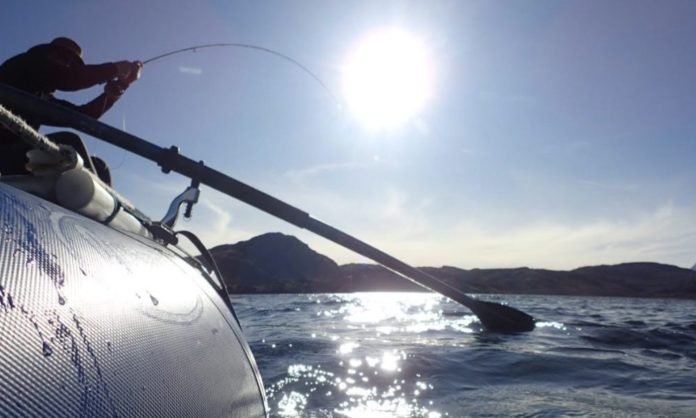How to feel good about your fishing
By Patrick Straub EBS Fishing Columnist
It’s the small talk we can all make right now—“Geez, I can’t believe this heat.” “It’s never been this bad.” “I sure hope it doesn’t last.”
To be blunt: believe it, it’s real; it has never been this bad; and it is going to last. For anglers we can adjust and adapt as we can escape to indoor air conditioning, climb a mountain peak, or go for a swim in a river or lake.
For the trout that swim in our area rivers and creeks, however, there is no escaping the two-handed gut punch that is our current situation: low stream flows and unprecedented hot and dry conditions. Trout require cold water to thrive and when low streamflows combine with high air temperatures, water temperatures rise fast, often to levels harmful to trout.
A myriad of articles exists on the impacts of high-water temperature and trout. Additionally, for any fish that is caught and released—which most of our local anglers do because they practice catch-and-release angling—a fish’s chances of recovery reduce substantially when water temperatures are above 68 degrees.
So, what is an angler to do?
Start fishing early, stop fishing early. On average, the coldest water temperatures occur overnight and rise throughout the day. On most local rivers and streams, if you care about the future sustainability of wild trout populations, fish as early as possible based on local regulations and stop fishing when water temperatures hit 68 degrees. A good gauge is to start at sunrise and fish no later than 1 or 2 p.m.
Carry a thermometer or visit streamflow websites. Visit your local fly shop and buy a thermometer today. This is your best gauge for your own fishing. If you don’t wish to purchase a thermometer, you can visit the USGS Montana streamflow charts via the web. Most sites have temperatures listed and current trends on most rivers in the area show water temperatures rising by early afternoon.
Do not take “grip-and-grin” photos of any fish that plan to be released. With the warm water temperatures prevalent right now, even a few seconds of being out of the water can be fatal for a fish. As water temps rise, the amount of dissolved oxygen in the water decreases. Less dissolved oxygen means it is very difficult for a trout to recover from being hooked and fought. Those negative effects are exponentially amplified if taken out of the water. In fact, make the No Fish Dry July pledge—a campaign started by Keep Fish Wet.
Open up your angling horizons. Trout may rule the roost of desired species in most of our local waters, but a variety of other species exist that are more tolerant of warm water temperatures. Carp and smallmouth bass swim in sections of the Yellowstone and Missouri rivers, and any of our area reservoirs are home to perch and walleye. For anglers who enjoy sight-fishing to large fish, the area’s fly fishing for carp provides some exciting opportunities. Carp? Yep. Carp. Give it a try.
Find another short-term hobby. The heat will eventually subside and we can get back to what we perceive as more normal conditions—more on that later—but until the onset of cooler weather comes or fall begins and water temperatures decline, consider doing something else. Our area boats abundant options: hiking, mountain biking, golf, volunteering, tennis, rock climbing, and the list goes on and on.
Accept that climate change is real and we need to do something about it. Low water combined with warm water temperatures is not new. If you look at last year, we started the summer with an above-average snowpack and streamflows but ended the summer with near or slightly below-average streamflows. Water is scarce. Most scientists agree that trout habit is declining because water is declining.
If you can’t make some small sacrifices to adjust your late-summer fishing habits in the short term, then how do you expect to alter other habits?
Patrick Straub has fished on five continents. He is the author of six books, including “Everything You Always Wanted to Know About Fly Fishing” and has been writing the Eddy Line for nine years. He was one of the largest outfitters in Montana, but these days he now only guides anglers who value quality over quantity.
Credit: Source link































